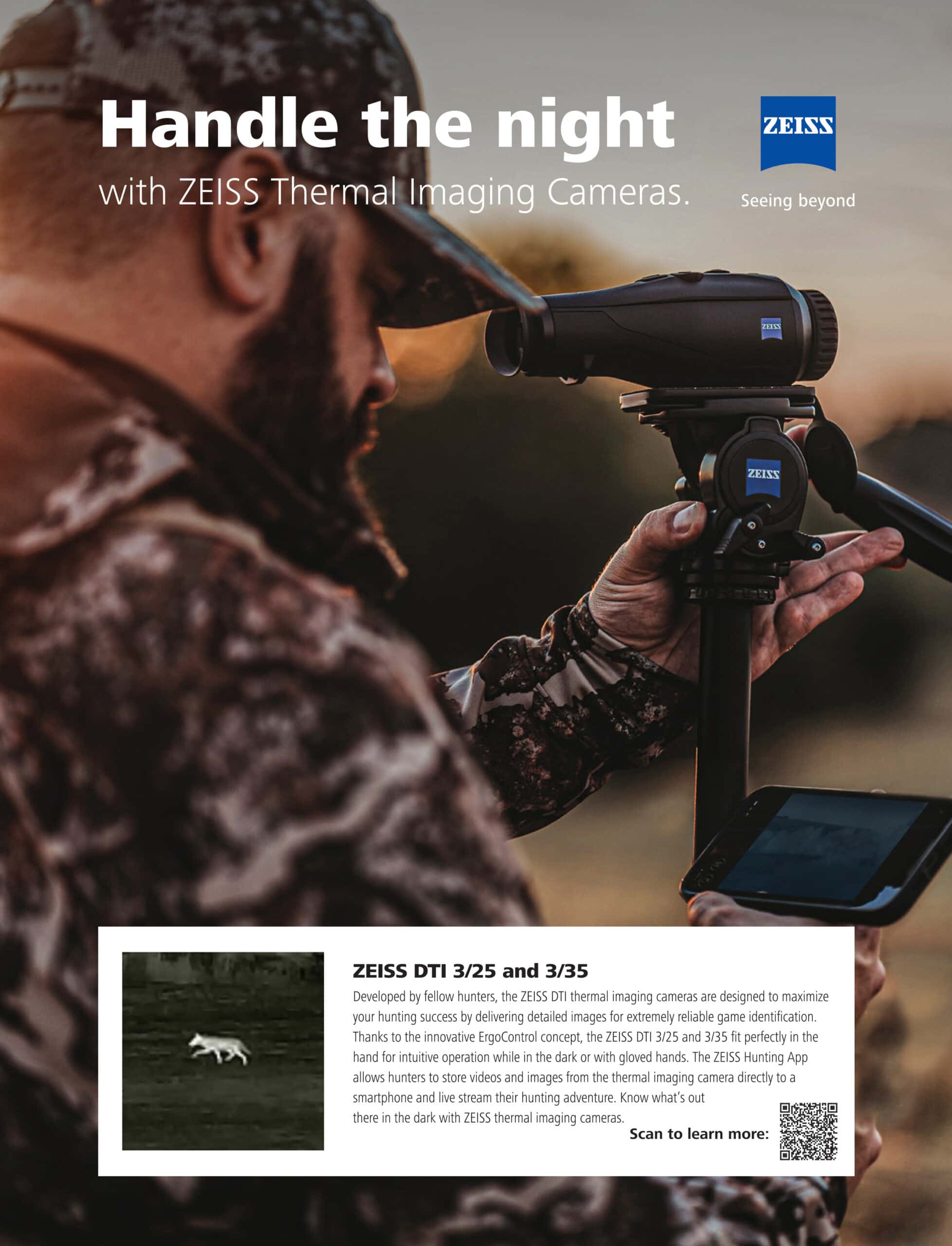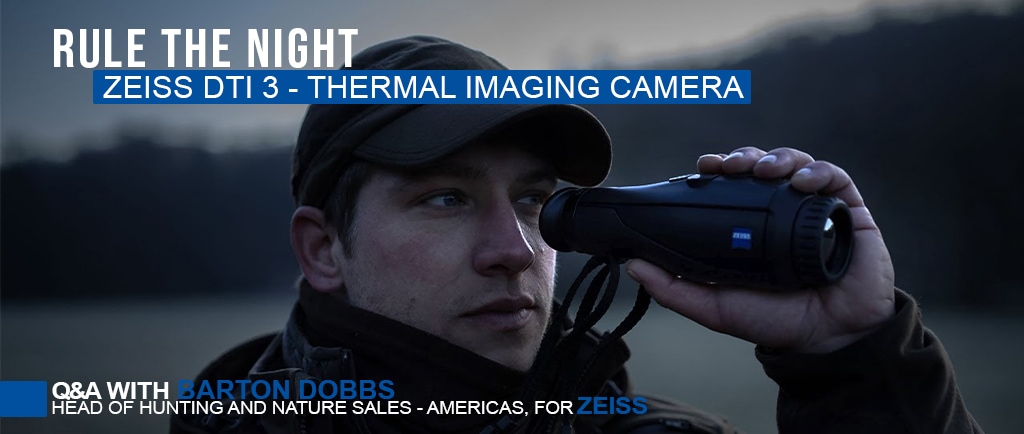
Thermal Imaging used to be reserved for the CGI visual effects of sci-fi movies (think Predator) and military technology, but that is not the case today. Nowadays thermal imaging technology is available to the public in an easy to use product, and has a huge array of applications. Zeiss has engineered a thermal imaging camera (DTI 3) with outstanding imaging quality and ergonomic design that is quickly catching on in many industries and recreational applications, including hunting. St. James Sporting Properties talked to Barton Dobbs, Head of Hunting and Nature Sales – Americas, for Zeiss, and got some very detailed product information and applications that the Zeiss DTI 3 is being used for.
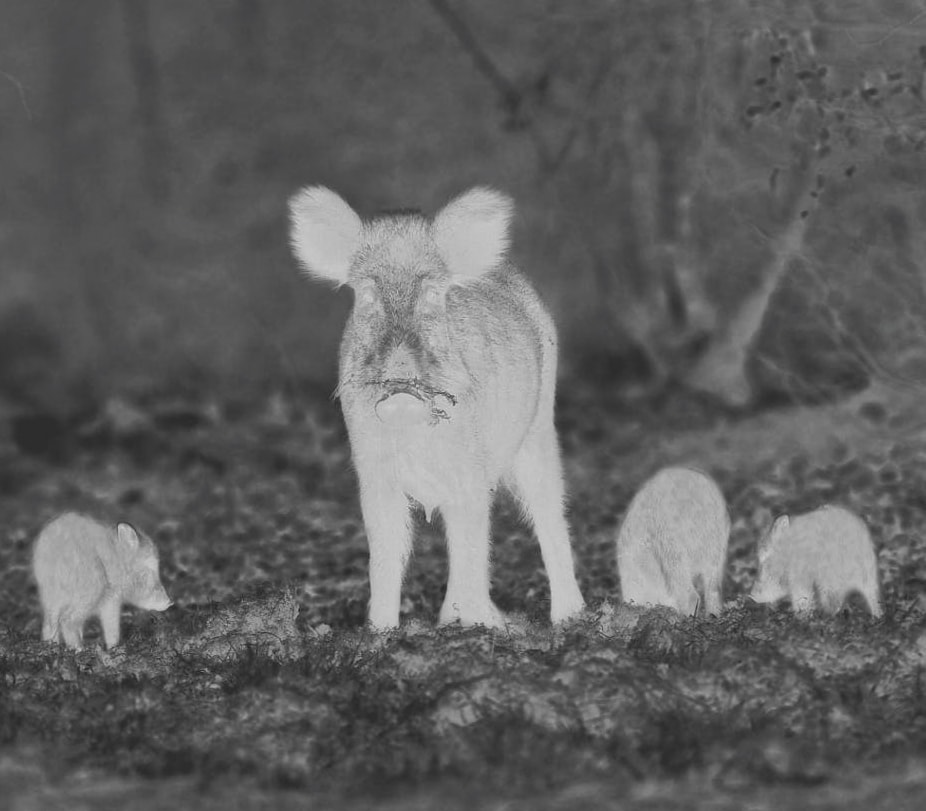 SJSP: Hey Barton, we appreciate you jumping on a call with us today.
SJSP: Hey Barton, we appreciate you jumping on a call with us today.
BARTON: No problem, happy to talk to you guys.
SJSP: We scrolled through the Zeiss website and scanned the thermal imaging pages, but what was the main reason, or reasons, that Zeiss got into the thermal imaging market?
BARTON: Thermal Imaging has been deregulated for uses like hunting hogs and other game, especially over in Europe. So wild boars are in thick cover, they’re in nasty, scrub brush, and they can be hunted at night now in Europe. So that opened up this entire hunting market for Europe and that is why we are seeing European optics companies like Zeiss jump in the mix by offering thermal products for consumers. And ZEISS is going full force in to thermal, with a strong pipeline of innovation and new product offerings. Thermal really is an interesting technology and has turned out to be the ‘next frontier’ for consumer optics.
SJSP: Could you cover the basics of the basics, like how the technology works, how is the visual image created, and then just kind of expand from there to what the DTI 3 all offers in terms of like zoom and magnification and clarity and all that stuff.
BARTON: Thermal products function by detecting infrared radiation (heat) emitted by objects. Since infrared radiation exists outside the visible color spectrum, it is not anything you can see so thermal devices do not depend on visible light. A thermal camera like the ZEISS DTI detects and measures the infrared energy of an object, then converts that infrared data into an electronic image that shows the surface temperature of the object. The thermal camera focuses the energy onto a chip with many pixels, the processor takes the signal from those pixels and creates a color map of the temperatures of the objects in view. These colors are sent to the camera’s display and result in the thermal image that a user sees through the device. The DTI 3/35 includes a high-res HD-LOCS display, high-quality optical components, a 17 micron 384×288 sensor, a contrast boost function for better performance in foggy or poor weather conditions, great ergonomics, and Bluetooth compatibility for streaming images and video to a mobile device. Tons of features and usability for the user.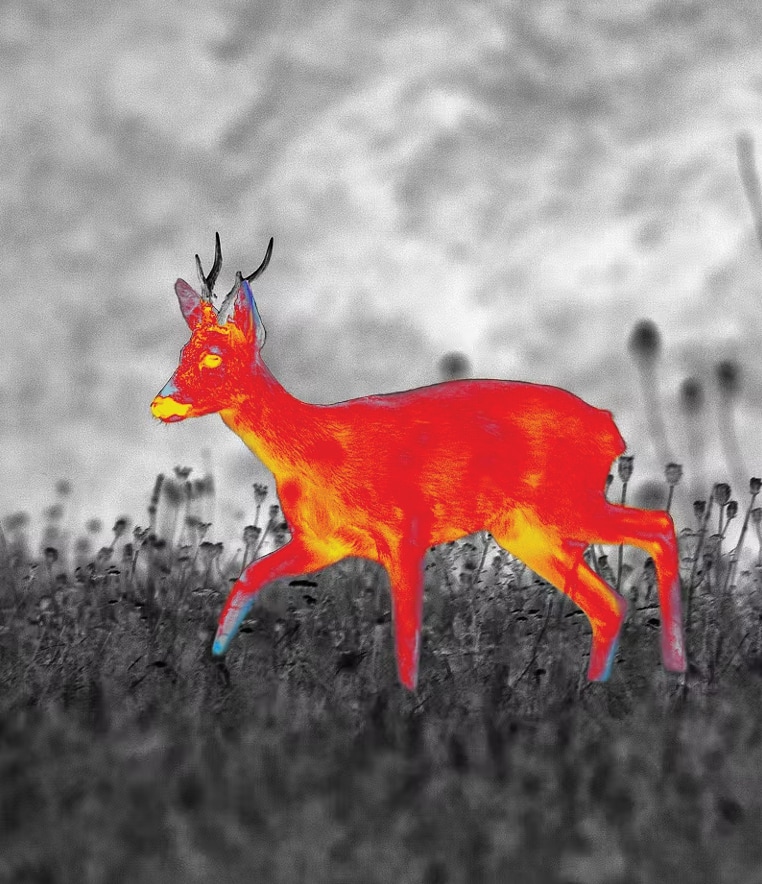
SJSP: When you said that you could see infrared, even during the day, my mind instantly went to like recovering a wounded bear, or a wounded Cape Buffalo, or something like that where it’s super thick and you need to be able to see in there.
BARTON: Absolutely. While night vision only works at night, a thermal device opens up all sorts of opportunities because it can be used effectively during the day. Our DTI 3/35 thermal can be used to locate the blood trail of a wounded animal, helping the hunter locate and process the animal more quickly and efficiently. That’s what has been interesting for ZEISS, is hearing about and discovering all of the many uses there are for thermal devices. We are finding all kinds of markets and uses for thermal that we never dreamed of. It’s great for hunting hogs, coyotes and other varmints but also for tracking game at night, or scanning the trail in front of you to make sure you don’t bust out any game while walking to your hunting spot. And there are uses for thermal in all parts of the country, too. For ranchers and farmers trying to protect livestock from a mountain lion or coyotes, they can use a thermal to find a lurking predator. This can save those animals and save the rancher or farmer a lot of time, effort and money.
SJSP: Yeah, I was thinking even detecting trespassers on the property at night, if you’re a landowner or property manager.
BARTON: Yes a property owner can use the DTI thermal to scan across their property to locate trespassers. We also sell a lot of DTI’s in South Texas, Arizona, and New Mexico to be used for border control.
SJSP: For Sure. And it would pick up infrared signature off of antlers or horns so you can tell the difference between obviously male and female but then even the size of a male?
BARTON: Absolutely. Our DTI 3/35 offers a 1,300 yard range with a high-def display, which really helps the user pinpoint details. Even at long distances you can discern which of the group is a buck or a doe, or bull / cow, and also judge the size of the animals. Maybe you also find that elusive monster buck or bull that you lost track of a few days before.
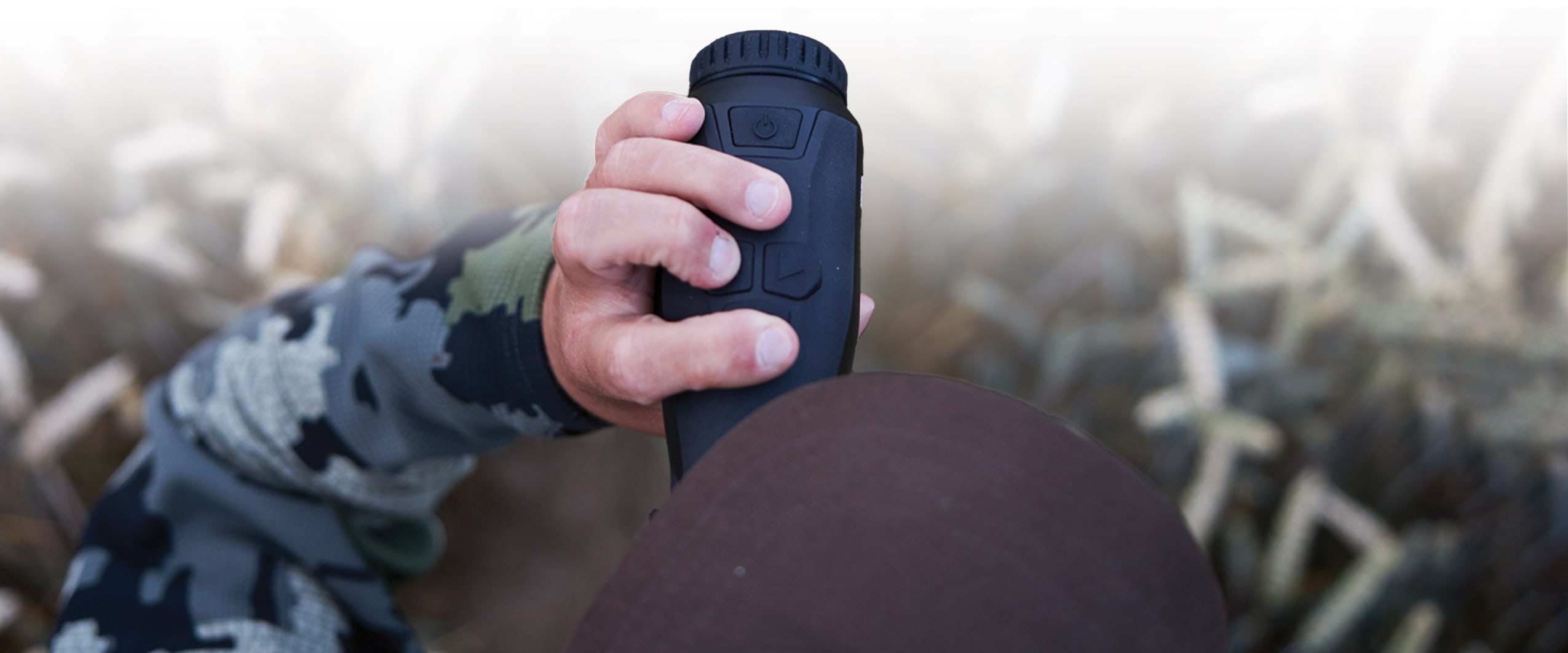
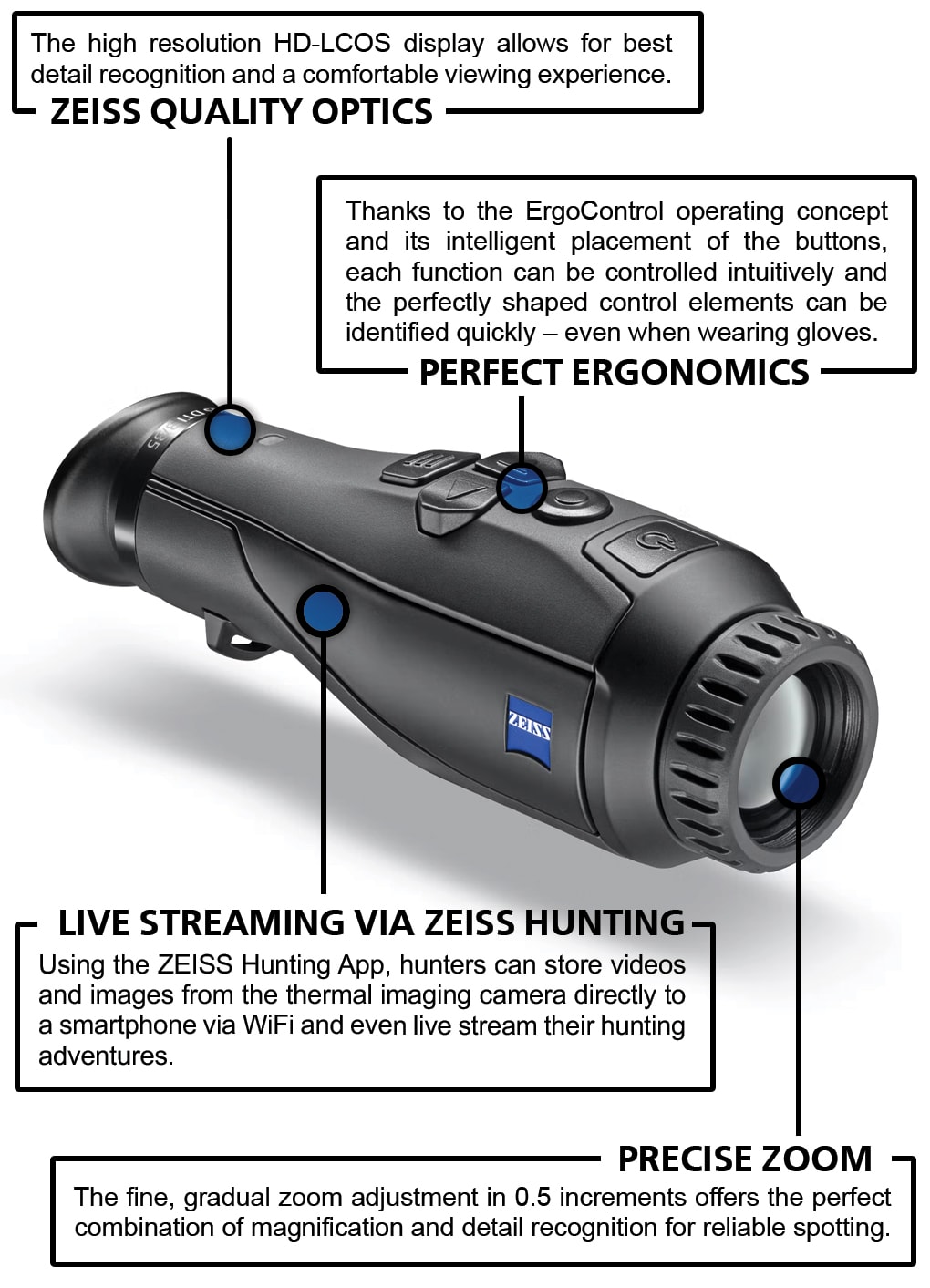 SJSP: Yeah, what’s the magnification on it? Because it’s variable, right? You can adjust it.
SJSP: Yeah, what’s the magnification on it? Because it’s variable, right? You can adjust it.
BARTON: With the DTI the user can zoom in at half-zoom increments which is helpful because that allows you to pinpoint a distant target more effectively. Other thermal handhelds zoom at 1x or 2x every time you push the button so you might ‘over-zoom,’ or zoom past your target. The DTI offers a 2.5x optical zoom, and then you’ve got 4x on the digital side.
SJSP: You said something that I was gonna kinda ask about using it during the daytime. I’ve played with night vision before and obviously you don’t want to dare turn those things on if it’s bright out, or you know, there’s a hot light out there somewhere. But as far as daytime accuracy, is there a limitation like outside temperature before things become skewed or you know, 90 something degree animal and a hundred degree day. Do the details fall off there?
BARTON: It’s a good question. Thermal devices pick up differences in radiation (heat) energy, so the hotter everything is, the more challenging the situation. The DTI includes a high-performance sensor which will help discern those minor temperature differences so that the user can pick out details of the target. The DTI also offers four different color modes: white hot, black hot, rainbow and then red hot. In a challenging thermal situation I like to change the mode around to see which mode draws out the best detail in that particular scenario. However, even if it’s warm outside an animal will be fairly easy to spot because it will be warmer than the brush, the trees, and grass around it. The DTI also has a mode called Hot Tracking, which tracks the warmest target in your field of view and frames it with a little red box.
SJSP: That’s awesome.
BARTON: Yes thermal technology brings a whole new world of understanding about what is out there on the horizon in front of you. You can locate and observe things that you wouldn’t normally see and gain an understanding of what they do, and when.
SJSP: What about the legal side of things? Like you said, people have loosened up on restrictions. I know every state is probably a little different, everyone has their own views. But if you could summarize some of that, like how does that work?
BARTON: Legality of hunting with thermal devices differs from state by state on what you’re able to do or what you’re able to use it for. There are certain states that you can’t hunt with a thermal at all, but a lot of states allow you to use thermal for observation as long as you don’t have it attached to a firearm. Sometimes it depends on the species. For example in Idaho, you can hunt coyotes and raccoons with a thermal, but you can’t hunt an Elk or deer. But you can scout for those animals, which is very helpful to many Western hunters. We always recommend that hunters research the latest laws and regulations to ensure their use of thermal devices follow local, regional, and state laws.
SJSP: Does it have digital image stabilization, or would it have a way to mount it to a tripod or a monopod to help with stabilization?
BARTON: Yeah, there’s a ¼” 20 thread on the bottom of the DTI that you can mount it to any tripod. There’s no internal image stabilization but since the user is not zooming past 4x typically, image stabilization does not come into play as necessary.

SJSP: Does it have recording, either internal or via Wi-Fi to the app?
BARTON: The DTI includes 15 gigs of internal memory for storing images and video. The DTI user can also send images and video via the Zeiss Hunting app, and even live stream them as well. It is really fun to live-stream with the DTI and show someone else what you are seeing through the DTI, and they can view it on their phone or a tablet or whatever.
SJSP: What about the battery life auxiliary power sources? How does that all operate?
BARTON: The battery life is 10 hours of runtime. It’s rechargeable so you can recharge every night and it doesn’t take super long to recharge it and you got another 10 hours of running time there. So USB charging, data transfer, all that goes through USB. And 10 hours is pretty significant because, especially if you’re backcountry hunting or doing something where you don’t have the ability to charge it, 10 hours is a pretty long time. And it has an auto shut off feature after being inactive for 60 minutes.
SJSP: What’s the 25 and 35 on the DTI 3 representing?
BARTON: The 35 and 25 refer to the size of the objective lens. So 35 millimeter is the DTI 3/35, 25 millimeter is the DTI. 3/25. The biggest difference between those two is that the 35mm delivers a bit more light and a longer thermal range, while the 25mm offers a wider field of view and a shorter thermal range.
SJSP: And I heard you say that the range for this is 1,300 yards, as far as the heat detection?
BARTON: Yes the DTI 3/35 has a range of thermal detection of 1,300 yards.
SJSP: Well, that’s more than I would imagine. And then at that distance it just dissipates. Why does it fall off at that distance? What’s the limitations there?
BARTON: A lot of it is simply the amount of thermal radiation an object gives off at that distance. At some point, your thermal device’s sensor loses the ability to discern detail on a target at a long distance. There’s just not enough energy being detected for the user to realistically discern what the object is, so we have to place a yardage limit on the thermal detection.
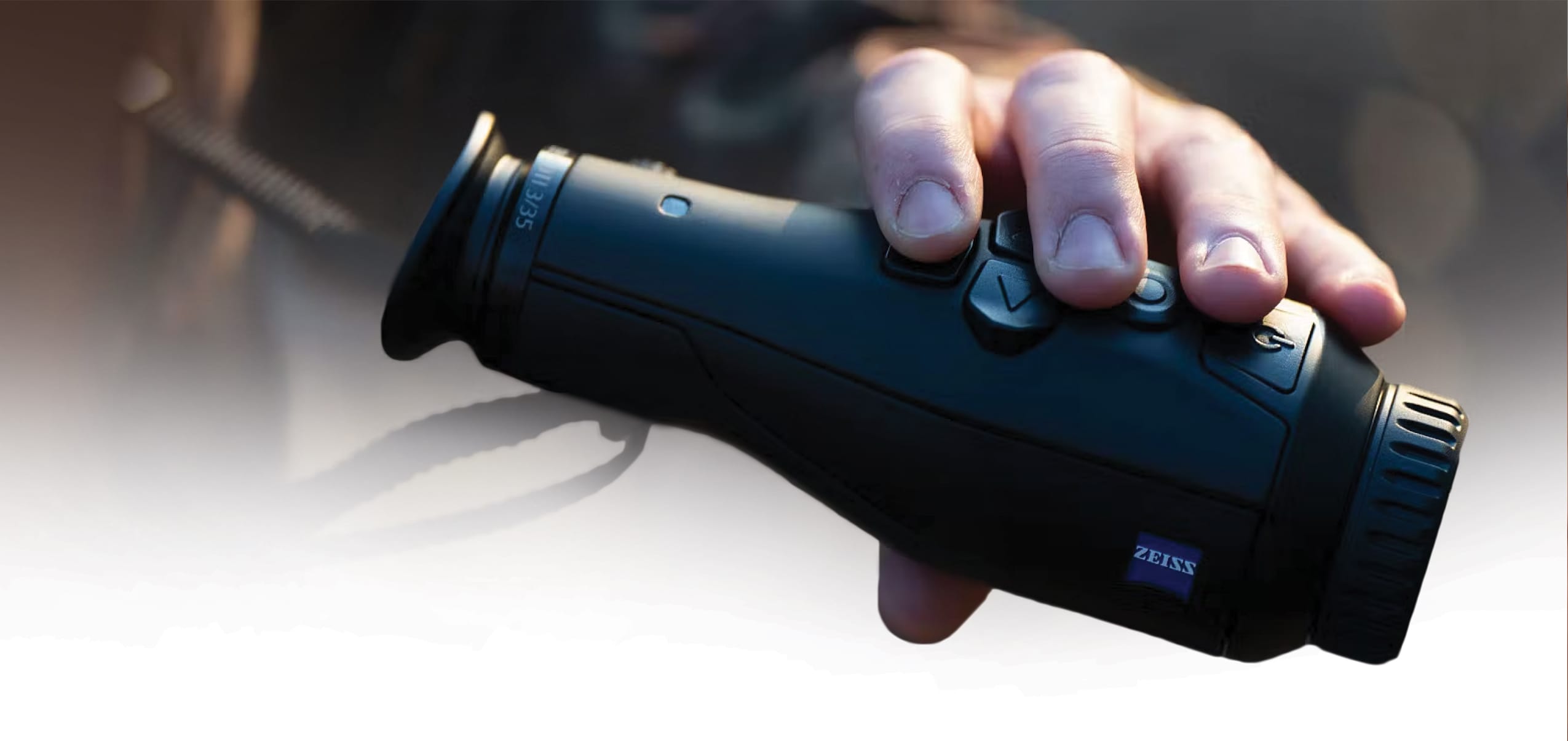 SJSP: Are there any other unique or creative applications that you’ve heard people using it for?.
SJSP: Are there any other unique or creative applications that you’ve heard people using it for?.
BARTON: Yeah, what’s interesting is one of our larger partners up in the Northwest sells these to power companies to check power boxes for heat. We’ve had the Forest Service use this to find fires. Border Patrol uses thermal imaging. The Arizona Fish and Game is using this to track deer that they dart. Their list of uses for thermal devices goes on and on.
SJSP: Do you have any personal uses? Or any good stories with it?
BARTON: Honestly, I mostly enjoy just finding hogs at my parent’s place in Oklahoma. We always hear coyotes, but to be able to see them across the field is really cool. You might think they are a mile away but they’re 200 yards in the middle of the field, because your thermal reveals this. The DTI gives me a new awareness of all of the critters out there and has helped me scout for game when I wouldn’t have been able to before.
SJSP: How is this model different from other thermal imaging devices?
BARTON: What Zeiss does extremely well is in the engineering of this product, the engineering and our ability to extract a little bit more detail and contrast because of the engineering in the lenses. It’s not something I can point to a number or specific measurement, but I would say our ability and our engineering specs are a little higher level than competing products. So you get better contrast and detail recognition at a further distance with this product than you would a comparable product. And that goes back to Zeiss’ history as an optical company. We don’t launch something unless we can make it the best optical product in the class. And that’s just a philosophy of the company. And then also, we thought a lot about the ergonomics of the DTI, too. It sounds simple and maybe a bit boring, but the ergonomics and usability of any optic are so important. If we can make the DTI easy to use, then people want to use it more often and they enjoy it more. And just honestly, something as simple as the placement of the buttons on the DTI are well thought out. The buttons are laid out very ergonomically to where each finger has its own button. One button zooms, the next one changes the color, the next one records or takes a picture. The DTI’s battery runtime of 10 hours is typically longer so you get more use out of it in the field. And the max range is 1,300 yards, and is one of the leading in the industry as well. And then the ability to connect to this Zeiss Hunting app. All these together make the DTI a no-brainer.
SJSP: What trade shows are you going to be at so people could kind of see it first person and use it.
BARTON: So we’ll be at Dallas Safari Club and SCI to support some retail partners at the show. We will also have booths at the Sheep Show, SHOT Show, Western Hunting Expo, and the Pacific Northwest Sportsmen’s Show.
SJSP: We’d love to just mess around with it. And we’re already thinking of all the different uses that could come from this.
BARTON: Using a thermal device is a lot of fun. Like I said, it just kind of bends your brain on how many different things you can use it for. It’s just fun to take it out in the middle of night and observe the natural world in a way you cannot with your naked eye.
